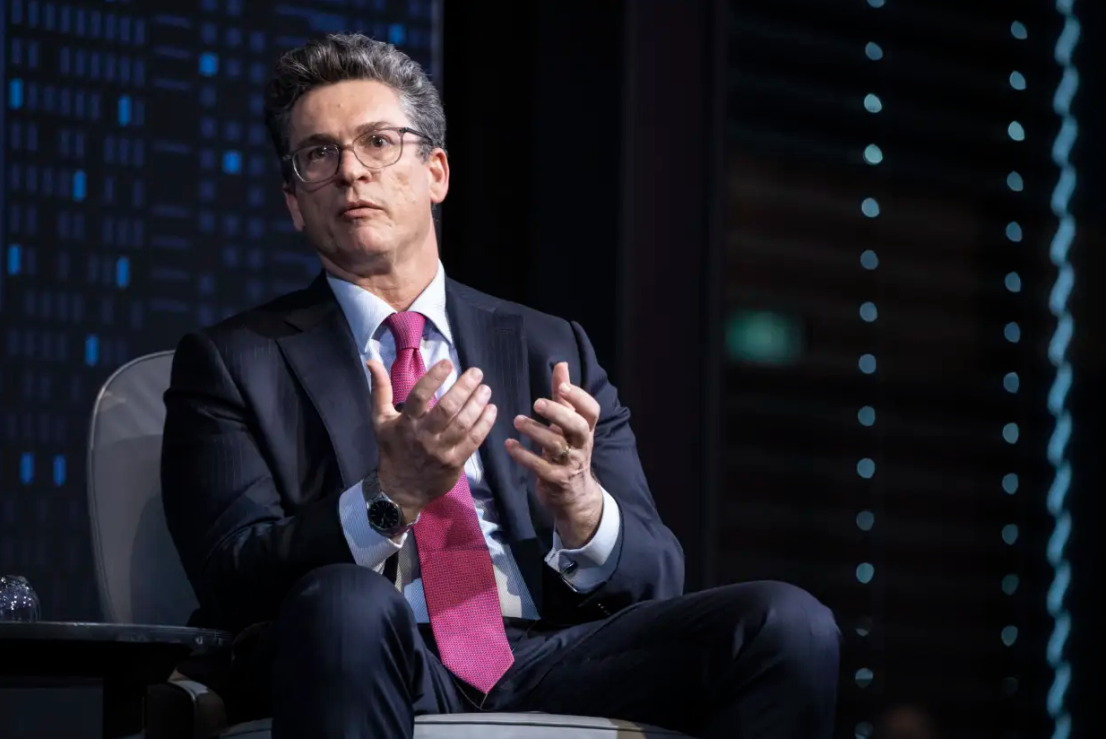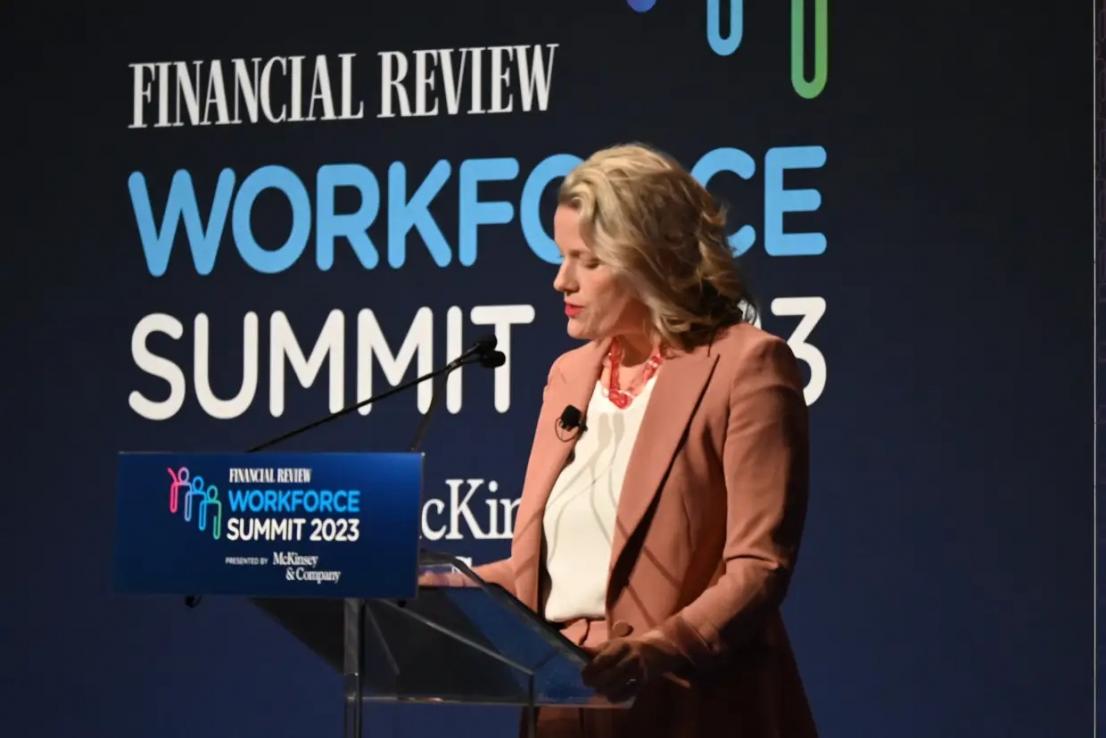
Women are doing more to support employee well-being but face higher stress levels as a result. Here’s how leaders can help.
In this episode of The McKinsey Podcast, senior partners and leaders Alexis Krivkovich and Lareina Yee join Lucia Rahilly, global editorial director, to discuss some of the startling and hopeful results recently released in the Women in the Workplace 2021 report. An edited version of their conversation follows. After, we hear from senior partner Sven Smit and what happened when, about 20 years ago, while at McKinsey, he asked for time off to spend with his young daughter. The McKinsey Podcast is hosted by Roberta Fusaro and Lucia Rahilly.
Burnout
Lucia Rahilly: Today, we welcome back to the podcast Alexis Krivkovich and Lareina Yee, both senior partners and leaders here at McKinsey. Alexis and Lareina, thanks so much for speaking with us today.
Alexis Krivkovich: It’s great to be here.
Lareina Yee: Thank you for having us.
Lucia Rahilly: As always, this year’s Women in the Workplace research covers wide-ranging ground, but today we’ll home in on three areas, and I’d like to start with a topic that many of us have felt personally and painfully during this pandemic. And that topic is burnout.
Alexis and Lareina, as part of your research, you and the team interviewed a variety of women across corporate America. I’d like to read a redacted version of one of their stories on the topic of burnout. And then I’ll ask you to react. And, for context, the woman sharing this particular story self-identified as being at the director level in her organization, a Latina immigrant to the US, and a mother of kids under four. Here’s what she told us:
“I’m feeling long-term burnout. I’m someone who always prided myself on being in control and having strong, emotional resiliency. And I am not doing great. My manager checked in on me, and I know he’s trying to empathize, but he said something like, ‘Oh, so-and-so keeps calling me to make sure you’re OK. We know you’re a flight risk.’
“We’re all aware of the social context we’re operating in, especially women working in corporate America. For me, I think, am I going to be another one that falls from all this? I’m fighting so hard, but it feels like the odds are against me, and it hurts.”
I find that incredibly powerful as an encapsulation of the battle that many women have waged internally over the course of the pandemic. And the numbers seem to bear that out.
The research shows that the burnout gap between women and men has almost doubled since last year’s report. Lareina, help us understand the dynamics here. Why are so many women so tired?
Lareina Yee: Well, frankly, women are hanging on. And that is probably the most blunt and simple way to put it. Forty-two percent of women report being burned out.
And, Lucia, as you mentioned, that is higher than last year and higher than men. So a little under half of your population of women are burned out. And that’s where we stand today. What’s fascinating about your story, the vignette, is the raw honesty with which that woman is sharing her experience from many different perspectives.
Also, a frankly cold response from her manager—in this case a man, but it could be a woman—of, I know you are someone we’re trying to retain. I mean, that makes you feel like a number, not a human who’s going through an incredibly tough time.
And, by the way, I don’t know how this woman’s performance is, but what we see across corporate America is that productivity is at an all-time high. And so what we often see is that women are delivering the performance and business results but at a great personal toll.
Women support colleagues more often than men do
Lucia Rahilly: The report also says that despite their own increasing burnout, women take action more consistently to fight burnout—and generally to extend their support to colleagues and reports—than men in similar positions do.
I will confess that I love and simultaneously loath the phrase “office housekeeping” that is used in the report. Alexis, what exactly is this extra work that women are doing?
Alexis Krivkovich: One of the most fascinating findings this year was how women leaders are really stepping in, in this moment, to be the type of leaders that companies say they most need and most value.
That role that they’re playing is really instrumental, frankly, to keeping a lot of companies going. Women senior leaders do more to help their employees navigate work–life challenges, relative to their male peers. Similarly, they spend that additional time helping manage workloads, and they’re 60 percent more likely to be focusing on emotional support.
To employees, these things matter not only because they feel good, but employees say when they’re receiving that type of additional support, they’re happier in their job. And they’re less likely to be thinking about a move.
In a moment where we’re facing the great reflection, where so many employees are thinking about making a big move, having women leaders stepping in—this is really critical. But it explains a lot of this sensation that we hear regarding burnout and fatigue because they’re disproportionately doing this additional work in the office context, and we already know, because we’ve measured it in the past, that they’re disproportionately doing it at home too.
A talent crisis looms
Lucia Rahilly: Alexis, I love that you mentioned the great reflection, or some are calling it the Great Resignation.
Lareina, you recently wrote a piece on the “third shift” for Fast Company, and there’s a great line in that piece toward the end: “Leaders can lurch from a health crisis to a talent crisis. Or they can take preventive measures that show they value their people.”
What are these preventive measures that leaders can take? What should leaders be doing differently at this time?
Lareina Yee: First? Let’s not just wait for this to play out. And, quite frankly, I think a lot of companies, unconsciously or consciously, are just letting it wait out: “Let’s just see what it’s like when we return to office. Let’s see what it’s like in a couple of months.” You know, “Let’s see what it’s like when we have another vaccine rollout.”
That’s not the right mindset here. As you said, you face a potential talent crisis, because as women—and as your workforce overall—have been reflecting, you don’t know if they’re going to make a move, and if they were to make a move and you were to lose half of your women senior leaders, that would take you back decades.
So, Lucia, to your point, what can leaders do first? They can acknowledge where we are. Second, they can think about what is the professional progression for these talented women. Third, they can start actually forming the work routines for a return to office, not waiting for the physical workspace but actually starting to live into it today.
Instead of having completely unchecked boundaries, start to put those in, start to put in the talent-management processes, the manager support, and the actual individual experience. And if you need to start asking different questions of your workforce in your pulse, do so.
What leadership can do to avoid a talent crisis
Lucia Rahilly: Alexis, is there anything that leaders can do to rebalance the workload that women are disproportionately shouldering in this “emotional housekeeping” area?
Alexis Krivkovich: Well, let’s start with the facts because it’s so astounding to me that, in this day and age, they still hold true. One in three women, and 60 percent of mothers with young children, just like the example you shared at the beginning, spend five or more hours a day on housework and caregiving. Five hours a day is at least another half-time job. And COVID-19 sort of stripped bare for us what was already under the surface and well understood by every working woman I know, which is how imbalanced those responsibilities outside the workplace are. Because these imbalances are not well recognized, and historically companies have not played a role in feeling a responsibility for that.
One in three women, and 60 percent of mothers with young children,...spend five or more hours a day on housework and caregiving.
Alexis Krivkovich
So one role for companies is to be thinking about how do we reflect performance reviews and expectations. For the majority of women, the thing they most worry about is how they’re going to be evaluated in their performance. It’s not “how much extra work I’m doing at home.” It’s, “Am I going to be penalized because this will have a hangover effect?”
We see the companies that are out in front of this right now. And what I mean by “out in front” is outperforming year over year on diversity goals. The companies that are outpacing their peers are leaning forward on things like childcare, elder-care supplements, thinking about flexibility, reimagining the roles. And, in particular, focusing more on the outputs and less on the inputs. “I don’t need FaceTime with you 24/7 if you get a great job done.”
The second thing they’re doing is they’re actually rewarding that extra work that women are doing in the workplace. When [women] show up as leaders who care for employees and their well-being—in the ways they disproportionately are holding the responsibility for DEI [diversity, equity, and inclusion]—only 25 percent of companies reward that in their performance reviews. But that 25 percent of companies is disproportionately those companies that are out in front on DEI overall.
Burnout for intersectional women
Lucia Rahilly: Speaking of DEI, the story we heard was shared by a working mom who is also Latina. Lareina, can you speak to burnout for women at the intersection—women of color, for example, or LGBTQ+ women?
Lareina Yee: Let’s start with something that Alexis just said, which is that, in this period of time, women have stepped up. Only a quarter of them say that that extra work was reflected in their performance review, a promotion, or a raise. So you’re doing extra and being largely unrewarded for it. That’s the starting point for all women.
To your point, as we look at intersectionality, the challenge is that the barriers all around you, from the very moment you start, are so much steeper. You have that extra context as well.
So let’s make that specific. Let’s say you are an Asian woman starting out. Perhaps you are someone like me. I am Asian American. You go through the corporate world, doing the extra work, less recognized even before. And still now you are much less likely to be promoted.
We see that Asian women account for one in 15 roles in the entry level among women, but they’re only one in 50 in the C-suite. We see that if you’re a Latinx woman, if you’re a Black woman, if you’re a woman with a disability, that at each of those intersections, the likelihood of being promoted, the gaps in terms of getting to the next level, the broken rung, they’re not just at the entry level. They’re there every step of the way.
We also know that things like microaggressions or the experience of being an “only” are so much more acute. If you put yourself in her shoes for a moment, you have to say, my goodness, she must really be committed to this organization, with all of those headwinds, with all of those barriers, to still be delivering results and putting in extra.
At some point, are we going to have the ability to recognize that informal performance in feedback and in actually thinking about the way in which we support talented people in our organization?
The broken rung of advancement
Lucia Rahilly: Let’s turn to this question of advancement and mobility for women—specifically, to the phenomenon you just referred to that we call the broken rung.
And here, I’ll share a story that was, again, part of your qualitative research. This was shared by a Black woman who is a senior manager in her organization. Here is what she said:
“At my company, we have these different leadership programs, which no one really knows about nor has the qualifications to get into. It tends to be people who are friendly with each other. And people tend to gravitate toward people who are like them and who look like them.
“I’ve talked to folks that have been here their entire career, White males, and they started off perhaps in the warehouse. Now, they’re at the VP [vice-president] level. I’ve also talked to a lot of Black and Brown associates that have been here for 18 years and are barely above the level they were initially at, or they were a little bit higher, but nowhere near their White peers, and no one really to talk to them and say, ‘Hey, let me fight for you.’”
Alexis, Lareina just mentioned the broken rung. And we’ve talked about that in our publishing before, but, for context, for new listeners, what does the phrase “the broken rung” really mean?
Alexis Krivkovich: The broken rung is the phenomenon that, for many people, feels really counterintuitive. The most inequitable, the most uneven, promotion between men and women is not actually at the very top, in those coveted C-suite and highly visible leadership roles. It’s, in fact, at the very first step up to manager. It’s that very first leap into management and early management that unlocks that entire pathway that that woman was describing—a future opportunity. Where men disproportionately, relative to women, get access again and again, year over year.
For every 100 men who leap forward, only 86 women do. And while that difference might feel small because it’s happening at the very start of careers, it’s amplified across huge numbers. And what it means is that women’s career progression is slowed down right out of the gate, and they never have that opportunity to catch up.
It also means that the future pipeline of diverse leaders we would want to see for those later opportunities never appears in equal numbers. And that’s why so many companies look at their leadership ranks and say, “Even if I now want to accelerate diversity and representation, I haven’t built and cultivated the generation of leaders that I need.”
The long game to achieve equity
Lucia Rahilly: So you’re speaking to progress over time. What progress have you seen so far? Have we seen improvements in the ways that women are faring relative to men vis-à-vis being promoted over the years that we’ve been doing this research?
Alexis Krivkovich: Interestingly, the most progress has happened at the very top. In fact, the biggest gain in the past seven years has been in the C-suite, the roles right at the table with the CEO.
That’s really encouraging because these are highly visible and high-power positions, but it’s also where we started furthest from equity to begin with. So we have gained ground, yes. But we’re now at one in four, when we start out with men and women at nearly 50/50 at the beginning of the pipeline.
So while we’ve seen incremental gains, what we haven’t seen is this tidal wave that I think, frankly, by 2021, so many of us expected, recognizing how much diversity exists at the beginning [of the pipeline]. Some of the bright spots that are out there have been in the past year. Even that increased focus that’s been placed on race and intersectionality in particular has meant that the gap between women of color and White women has closed some.
And that’s a really good thing. But overall, we’re still so far from where we need to be to get to equity. To your point, this is a long game, right? It takes a long time to build a next generation.
So there’s the thought that companies could be in this perilous moment, where if we double down, we have a real opportunity to win this moment of reflection. But if we don’t, there are so many talented, diverse colleagues in companies that will be thinking about, “Am I getting the return on the investment I’m putting in when I know I’m giving extra, and I know that my company self-describes they don’t reward it, formally.” That’s the perilous moment we face.
Women of color in the workplace
Lucia Rahilly: Let’s take that point and segue to our last segment, turning specifically to the experience of women of color in the workplace. And here, we’ll hear a bit of a story from an East Asian woman working in an entry-level job. Here is what she said:
“Because I’m the only woman of color on my team, there’s a visible difference between me and the other people on the screen. That can be intimidating. It makes me cautious and more reserved about what I say or do. I feel, in those spaces, like I’m representing either women or my race or ethnicity. So I don’t want to say or do something that could contribute to a stereotype about women or people of color.”
Lareina, you’ve written much about the phenomenon of “onliness.” Anything to say in response to that story?
Lareina Yee: That story captures being an only so well. It is the simultaneous experience of feeling isolated and also worried and pressured to represent the most positive stereotypes. You think about that surge of, frankly, negative energy, fear, self-consciousness. And, by the way, all of that is distracting you from the purpose for why you are in that room, which is about the work itself. And that happens to you at 8:00 a.m., 12:00 p.m., 1:30 p.m., five o’clock—and that’s Monday, Tuesday, Wednesday, Thursday, Friday, and probably a little bit on Sunday, just for kicks.
And you wonder why, over the course of five years, ten years in the workplace, that doesn’t have an impact on you. So on the one hand, you can say, “Sell, I guess, the upside,” she says a bit sarcastically. “You’re driving an enormous amount of resilience and training.” But I think we would all say that that’s not the way to bring out the best in people. Particularly, your quote, your story, was of an Asian woman. What’s really interesting about Asian intersectionality is it’s often less spoken about. That story isn’t one that a lot of people understand.
And saying, oh, your experience is the same as a White woman’s experience or the same as a Black woman’s experience is incredibly wrong. Each of these experiences has unique dynamics to it. So then it goes back on you to explain that to somebody.
I think after all of that you’re just exhausted, and I go back to 42 percent of women are burned out [and probably thinking] “Well, you know, I’m exhausted just even thinking about that, never mind delivering on my job, delivering on the targets and expectations, going home, and if I have children, in the evening, doing my second shift.”
The power of allyship
Lucia Rahilly: We talked earlier about new commitments to DEI initiatives, which would presumably help or mitigate some of this exhaustion of having to explain to and educate colleagues and so forth over the past couple of years. Certainly, and particularly since the killing of George Floyd, many leaders have become galvanized and spoken publicly about taking action on racial equity. What did the Women in the Workplace research tell us about how that revitalized focus has played out so far in the workplace?
Lareina Yee: The corporate commitment is at an all-time high toward improving racial equality in local communities across all of the states, across all our urban centers, across rural places. I mean, that’s extraordinary.
The challenge is that commitment isn’t backed up by the experiences we’ve seen this year. And I’m sad to say that, but the facts tell the story.
Let’s just take the very simple concept of allyship. What we see this year is that the number of leaders, both men and women, of any race, of any intersection, are raising their hand. And they’re saying, I absolutely want and believe it’s important to be an ally. But the very same phenomenon we saw last year, we continue to see, which is, when we start to ask questions about the day-to-day actions of an ally, we see a huge drop-off.
So while close to 80 percent of managers in the United States will say, “I am an ally,” when we actually look at brass tacks—practical actions of offering an opportunity for a woman of color, bringing someone into a circle they weren’t in before, actually asking them how they’re doing, supporting them—that drops off to the low teens. That disconnect between recognition and action? That still holds us back in the day-to-day workplace.
While close to 80 percent of managers in the United States will say, ‘I am an ally,’ when we actually look at brass tacks...that drops off to the low teens.
Lareina Yee
Lucia Rahilly: Lareina, any specific ways you’ve seen leaders support women of color successfully?
Lareina Yee: It absolutely starts with advocating for new opportunities for women of color.
How often have you opened an opportunity professionally at a meeting—in terms of a promotion, in terms of opening up your network—to women of color? Secondly, have you really stepped up to go beyond mentorship to sponsorship? By the way, that goes back to my first point, which is opening up opportunities professionally, not just being empathetic.
Third, do you publicly recognize women of color, give credit to them for their contribution? All too often, what women of color, particularly Black women, experience is that their judgment is questioned. Do you actually stand up for women of color when their judgment is questioned in the moment, in the meeting, at that time?
Another one is, do you confront and question and challenge discrimination? When you see it, do you interrupt behavior that is not inclusive to women of color, as it happens? If you think about these actions, they’re incredibly tactical.
There are things that happen at any given moment of the day, and that is where we fall. It is not just the big committee decision to promote a woman of color, although that’s important. It’s also all the grains of sand that hold you back on a daily basis, and that’s where real allies shine. They do it when no one’s noticing, and they’re consistent, and they show up minute-to-minute. If you’re a woman of color, you know who those people are, and you know how few there are in the world.
Alexis Krivkovich: We see that women do twice the sponsorship of their male peers in the organization, a phenomenal amount of lifting up of women and men who are below them and rising in the organization as talent.
Very often I hear from male leaders, “Well, I’m not sure if I’m the right person to support this woman of color, because I don’t have that experience. I won’t know what it’s like to be a mother, to be Hispanic, in some cases to have a disability, or some other form of intersectionality as well.” And my answer is always, “If you are a leader, you are the person, because if you don’t, then you leave all of that to someone else, and, disproportionately, what we see, to women.”
We can measure that women who say they have allies in their organizations show much lower levels of microaggressions, much higher levels of overall support. They’re happier, and they’re more likely to stay. So getting this right is actually about unlocking the key to getting all talent to feel like they have a fair and equal shot and are excited to stay to see that through.
Lareina Yee: I think Alexis captured it beautifully. It’s a huge talent unlock. Instead of thinking of this as a risk to be managed, think of this as an opportunity.
Optimism heading into 2022
Lucia Rahilly: Sometimes, I feel that we’ve been talking about these issues since I was in college, and that can feel discouraging. What are you most optimistic about going into 2022, coming out of this Women in the Workplace report?
Alexis Krivkovich: I’m most optimistic about the fact that we’re having an honest conversation, and now with a real fact base. We’re not talking about these things as perception but as real and measured experiences that companies can’t hide from—and they don’t want to.
As a mother of three young daughters, it gives me real hope because I’ve been thinking about this question for 20 years. But in 20 years, when they’re fully in the workplace, maybe we’ll have a totally different paradigm.
Lareina Yee: What we see year over year is that sunlight is the greatest disinfectant.
As Alexis said, you can’t escape the facts. That allows us to have a really honest conversation. Sometimes, that’s not very comfortable, but through that process, we’re actually going to get to a better place. So every year, and this year is no exception, I end the research feeling incredibly optimistic.
And while the stories and vignettes that you shared are incredibly harrowing, there are also some incredible stories. I met somebody who introduced herself to me at a cocktail dinner party, and she said, “I heard you and some of your colleagues talk about the Women in the Workplace report. I read it. And it was just an outpouring of emotion, of being heard, being recognized, seeing myself, my experiences in the data, knowing I wasn’t alone.”
And she’s also a sponsor of other women now. She’s helping five other women. That gives me a lot of hope.
Lucia Rahilly: Any example from your own career of someone acting on your behalf as an ally in a way that helped you move forward?
Lareina Yee: I was just starting out at McKinsey. I was a business analyst. We had been working really hard on a project, and I was working on my work stream heads down. We were getting ready for an executive meeting with, I think it was, the president of the group, someone very senior. I was so nervous. Again, my nose was in the books, and I show up to the meeting and I sit down, and then the other people saunter in, and I am ready to answer any question. And the president looks over at the table at me and says, “Who is that?” Literally says that out loud. I think he thought I was the coffee person.
And so his question and his body language is like, “Why is she sitting down at the table?” And the senior male partner didn’t skip a beat. He looked at the senior executive straight in the eyes and said, “She is in charge of the most important analysis that’s going to fix your company. So we’ll be following her direction at this point.”
I was the most junior person in that meeting. Let’s be honest—my piece was one of many pieces that contributed to the growth of the company. But him saying that, not hesitating to assert my value in that meeting, made all the difference. And I’m still so grateful for not feeling like an imposter in that meeting but feeling like I belonged at that time.
Lucia Rahilly: And that so easily could have gone a different way.
Lareina Yee: The typical thing that would happen is no one would say anything. It would just be a bystander, like, “Oh, well, you know, that was kind of uncomfortable, moving on.” And you spend the rest of the meeting thinking about that moment or coming back to that moment—it does something to your confidence. And it does something to your confidence the other way when someone steps up as an ally. That’s the power, the positive power, of someone actually being an ally to you.
Alexis Krivkovich: Let me share a personal story of my own about sponsorship. A number of years ago, I found myself as a new parent and in a really challenging project situation [at work].
It was a new set of leaders I was working with. There were politics involved, a lot of travel, long hours. It was a really tricky project, and it didn’t go particularly well. And at the end of it, I recall one of my biggest supporters set me down for what I thought was going to be a really tough-love conversation about all the things I needed to improve.
It was a moment where I felt really low in my own confidence. And instead, he started by saying, let’s just shake it off. You don’t need to take big lessons from this. Not every moment has to be the one where you knock the ball out of the park. I know you and your potential, and I can see everything great you’re going to do from here.
And for me, in that moment, having someone who was really focused on the long game of what I was most capable was the thing I most needed.
Lucia Rahilly: That’s really inspiring. Let’s close there. Alexis and Lareina, thanks so much for taking the time to speak with us today.
Lareina Yee: Thank you so much.
Alexis Krivkovich: Thank you.
Lucia Rahilly: For more on our Women in the Workplace 2021 report, look for the link in our show notes or visit us at McKinsey.com.
Roberta Fusaro: A flexible work schedule is top of mind these days for many. As it was about 20 years ago when Sven Smit, senior partner at McKinsey, asked for the unusual—time off to care for his young daughter. This is from our My Rookie Moment series, which you can find on McKinsey.com.
Sven Smit: When I was an associate, which was a long time ago, we actually still were on a schedule at McKinsey that on Saturday morning, we would have our training days, once every two weeks. They were great fun. We learned a lot, but, you know, it was on a Saturday, kind of atypical if you compare it with these days.
And I would also say there was an ethos in the firm that if you were to go home at 6:00 p.m., people would jokingly tell you, “Are you taking the afternoon off?” And for many personal reasons, particularly because I wanted to be with my daughter and help her grow up, I had decided that I wanted to go part-time. I was the first male person at McKinsey that would consider [working part time]; there was one woman before me that actually did work part-time.
And, you know, I was young. I had no reputation whatsoever. And I had to explain this to my office manager, who was of the entire spectrum of hard workers, the most hardworking person. And I remember that my feeling was that I would go into his office and say, “I’m going to go work part time, at least. You know, be home on time on Wednesday and Thursday and not be traveling on those days, and Friday take off to be able to care for my daughter.”
And I thought he would just basically say, “That’s not possible.” So I had sort of resigned myself mentally to the fact that I would be resigning by saying this. And to his credit, he said, “Well, probably you’re going to do this better than I did. Good luck.” I learned a lot from going part-time and doing it for the first time.
This might be a dated story for those of you that hear it now. In 1996, this was quite unusual. At the moment, it’s totally usual. At our firm, it’s not even a question when people bring it up—we know how to do it, and we’re well organized. But at that time, I fully thought I would be leaving the firm by asking the question. And I was proud that this person said, “You’ll be able to do it. Good luck.” And, you know, I had some luck. I’m still here.










